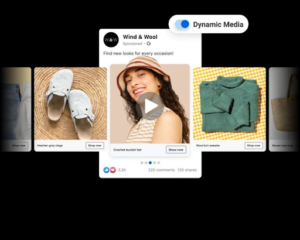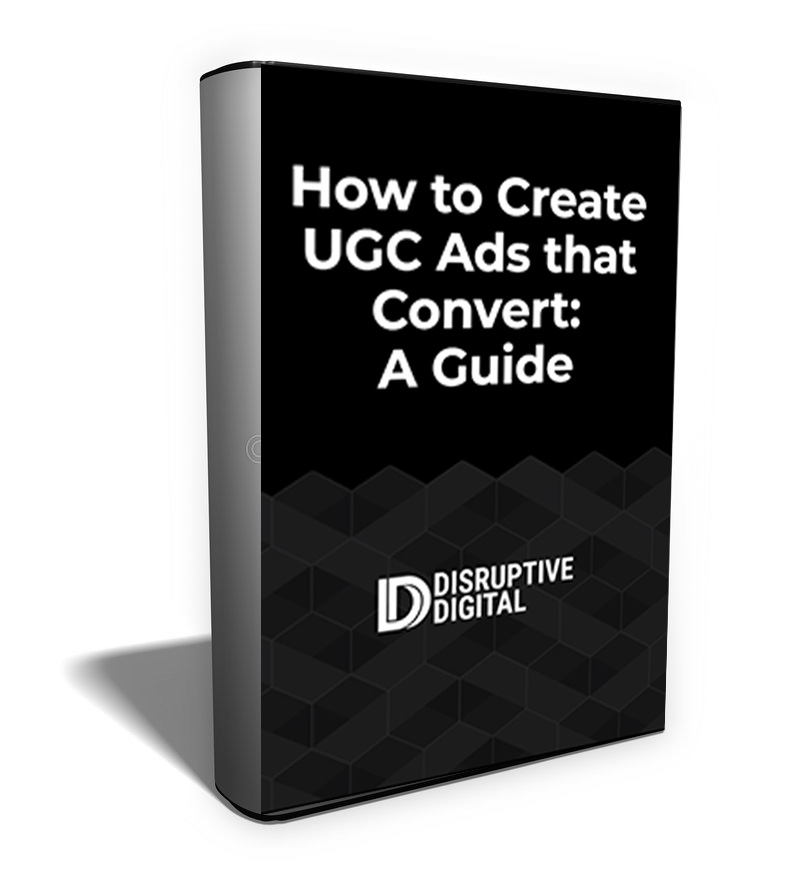In the evolving world of digital advertising, understanding how to effectively use Meta Ads (formerly Facebook Ads) is crucial for any media buyer. However, many marketers still fall into common pitfalls that hinder ad performance and waste budget.
Here are ten red flags indicating the person running your ads might not be fully grasping the nuances of Meta Ads.
1. Not exiting the learning phase
Incorporating too many ad sets is a surefire way to drive worse performance.
Instead of optimizing for people who will convert on your ads, your account is relegated to the Learning Phase, a period of worse performance and higher volatility.
Advertisers with ~20% of spend in Learning Phase see +17% conversions and -15% CPA vs. advertisers with ~80% of spend in Learning Phase.
To efficiently move beyond the Learning Phase, an ad set requires about 50 optimization events within a 7-day period. Therefore, it’s essential to allocate a budget that supports these 50 optimization events in a week. Setting a budget that is either too low or excessively high can mislead the delivery system regarding the optimal audience for your ads.
Another significant factor preventing ad sets from exiting the Learning Phase is the volume of ad sets. Running too many ad sets simultaneously leads to less frequent delivery for each set. As a result, fewer ad sets complete the Learning Phase, and more of the budget is consumed before the delivery system can optimize performance effectively. A practical approach to mitigate this issue is to simplify your account by consolidating ad sets. This consolidation not only streamlines the number of ad sets but also merges their delivery learnings, enhancing ad performance.
Should your ad set fail to accumulate sufficient optimization events to exit the Learning Phase, the status in the Delivery column will display “Learning limited.”
2. Segmenting your audience too much
It’s tempting to use your Meta ads as a way to drive your audience through the entire funnel.
But in reality, a consolidated funnel means more signal and better performance.
When possible, focus on a single stage of your funnel, whether that’s prospecting, re-engagement, or retargeting.
If you don’t, you may start to count and optimize for non-incremental conversions that don’t actually add value to your business.
3. Using interest targeting
If you are leveraging interest targeting in any capacity, you are likely leaving cheaper conversions on the table.
Broad targeting has been found to outperform interest-based targeting, delivering +16% better CPAs.
During my tenure at Facebook, one of my initial actions with each ad account I managed was to steer them away from interest targeting. The reason for this shift? Interest targeting narrowed the pool of potential viewers for your ad, whereas broad targeting proved more effective due to the pixel’s conversion optimization capabilities.
Broad targeting was so successful that Meta transitioned advertisers who used interest targeting to new programs that didn’t restrict them to such narrow parameters. Now when interest targeting is employed, the system automatically widens its reach to include more users.
Therefore, if you were to target multiple different interest groups, you would essentially be fragmenting your budget significantly, thereby diminishing your campaign’s performance. This is because you wouldn’t be fully utilizing Meta’s powerful machine learning and optimization capabilities inherent in its advertising signal.
4. Spending too much on retargeting
Overinvesting in retargeting can lead to spending that doesn’t incrementally contribute to sales. This is often indicated by high frequencies of ad exposure over short periods, which may suggest either wasteful spending or targeting too small an audience. On most advertising platforms, retargeting campaigns appear highly effective, boasting high conversion rates and low Cost Per Acquisition (CPA), seemingly driving both new and existing customers to make purchases.
However, it’s important to understand why this might be the case. Retargeting ads on platforms like Facebook and Instagram target users who have already demonstrated significant interest in your product. Therefore, these ads might not be the sole reason for their conversion. Rather, they could simply be one of the steps in a conversion journey that would have occurred even without the ads.
Despite this, retargeting often receives a large share of digital advertising budgets due to its seemingly impressive performance metrics. It’s crucial to assess whether your investment in retargeting is genuinely driving additional value or merely capitalizing on conversions that would have happened anyway. Carefully evaluating your retargeting spend is essential to achieving a more effective Return on Investment (ROI).
5. Ignoring Facebook and Instagram Shops
One of the easiest ways to improve your overall conversion rates and ad efficiency is by allowing people to easily shop and checkout in Facebook and Instagram.
Because Facebook is able to see the full transaction of a conversion on Shops, the more data they have visibility to, the better the model is to optimize all of your ads for your target audience.
These insights are crucial in a post-iOS 14 privacy world where website data is much harder to come by.
Additionally, this feature allows Meta to automatically send people either to your website, or to your shop on Facebook or Instagram. Each person would be directed to the destination that most likely lead to their conversion meaning better results overall for your business than only sending people to your website.
6. Not consistently testing new creative
Creative is one of the most important levers for advertisers on Meta. In fact, 56% of all auction outcomes can be attributed to creative.
But how can you take advantage of this lever? Always be testing new creative!
Did you know the fastest growing advertisers on Meta test 11X more creative per month and see an 11X variance in Return on Ad Spend (ROAS) between their top and bottom performing ads?
This can be attributed to several interconnected factors:
- Diverse Creative Testing Leads to Discovery of High-Performing Ads: By testing a significantly larger volume of creative options, these advertisers increase their chances of discovering exceptionally high-performing ads. This is akin to casting a wider net; the more variations you test, the more likely you are to find those that resonate deeply with your audience. This process naturally leads to a wider variance in performance, as it uncovers both highly effective ads and those that are less so.
- Tailored Messaging and Segmentation: Testing a large number of creatives allows advertisers to tailor their messages more precisely to specific audience segments. Different groups may respond differently to various creative elements (imagery, messaging, call-to-action). The more tailored an ad is to its audience, the higher the potential ROAS.
- Learning and Optimization: Frequent testing provides a wealth of data about what works and what doesn’t. Advertisers can use this data to continuously refine their ad creatives and targeting strategies. This iterative process means that successful advertisers are constantly learning from both their high and low-performing ads, leading to a continuous improvement in ROAS over time.
- Innovative and Fresh Content: Regularly introducing new creative content keeps the ad campaigns fresh and engaging, which is critical in a fast-paced digital environment where consumer attention spans are short. This practice also helps combat ad fatigue among audiences, ensuring sustained engagement.
- Risk-taking and Experimentation: Advertisers who are willing to test extensively are often more open to taking risks and trying unconventional ideas. This approach can lead to the discovery of highly effective, novel ad concepts that break through the clutter, resulting in high-performing ads.
- Adaptability to Platform and Consumer Trends: The digital advertising landscape, especially on platforms like Meta, is constantly evolving. Advertisers who test more frequently are better positioned to quickly adapt to changes in platform algorithms, consumer preferences, and market trends.
In summary, the practice of testing a high volume of creative variations enables advertisers to discover more effective ads, tailor messages to audience segments, learn and optimize quickly, introduce innovative content, take calculated risks, and adapt to changing trends. This comprehensive approach is why these advertisers not only see a wide variance in ROAS but also experience faster growth.
7. Not running differentiated creative
It’s not just important to constantly launch new creative. You also need to make sure you are rotating in new formats and concepts as well.
While some users might prefer images, others prefer videos and carousels. By only showcasing one ad type, you are limiting the system to only reach people who engage with that type of media.
It’s also important to ensure your assets look visually distinct. In fact, Meta’s AI actually scans every image and video you upload and if it sees to ads that look similar, it will treat them similarly in the auction.
Beyond that, creative diversification can unlock net-new audiences as well. For example, featuring an ad with a 24 year-old white male will drive a very different type of responder compared to an ad with a 54 year old Hispanic women.
How much can creative diversification help your performance?
Creative diversification has been shown to drive 32% increased efficiency and 8% incremental reach.
8. Neglecting catalog ads
If you sell multiple products, one of the easiest ways to improve performance is with catalog ads. This ad solution allows you to dynamically run the right product to the right person at the right time in Meta to improve your performance.
Advertisers who run catalog ads can drive sales across more products and can get even better results with a strong catalog set up.
For example, match rates for your products with Meta are crucial to driving strong results. You need to aim for a Catalog match rate of at least 90% for optimal performance.
Additionally, augmenting your catalog with creative overlays can drive as high as a 3x performance lifts at scale.
If you’re not running catalog ads, the best thing to do is start by testing into them because they can be an easy low-effort way to drive more performance with scale.
9. Sending people to a slow loading landing page
Has this ever happened to you? You tap a link on your mobile device, only to have the website take so long to load, you leave before you even see it. You’re not the only one.
53% of mobile consumers will leave a site that takes longer than 3 seconds to load.
There are a number of things businesses can do to help ensure the best possible mobile experience for people. Site load times can be affected by numerous factors, including quality of connectivity, whether or not the site is optimized for mobile and the website’s server. Business can optimize their sites for mobile by:
- Minimizing landing page redirects, plugins and link shorteners
- Compressing files to decrease mobile rendering time
- Improving server response time by utilizing multi-region hosting
- Using a high-quality Content Delivery Network to reach audiences quickly
- Removing render-blocking javascript
A slow mobile site doesn’t just frustrate your customers, it can limit your business. In retail, for every one second delay in page load time, conversions can fall by up to 20%.
10. Taking Credit for Sales That Would Have Happened Anyway
Media buyers must critically assess ad reporting.
A high percentage of view-based conversions could suggest that Meta is incorrectly attributing conversions to ads when these conversions might have occurred regardless. It’s crucial to critically assess your ad reporting to ensure it reflects logical and effective marketing outcomes. For instance, you may notice your ads are apparently successful in driving conversions, yet there is a lack of direct interaction, such as clicks, with your ads. While view-based conversions can be significant, an excessively high rate of such conversions could indicate that your ads aren’t actually driving incremental sales.
When a user sees an ad but doesn’t click on it, yet still makes a purchase, it might suggest that the user would have converted without seeing the ad. In these instances, Meta’s system might imply that the ad caused the conversion, but it is more likely to be a correlation rather than a causation. This scenario is particularly common with audiences lower in the sales funnel, such as site visitors or existing customers, who are often targets of retargeting campaigns.
Conclusion
In summary, navigating the complexities of Meta Ads requires a nuanced approach. By avoiding these common pitfalls, your media buyer can optimize ad spend, reach the right audience, and drive meaningful conversions. If you recognize these red flags in your media buyer’s approach, it might be time for a strategy overhaul.
Thankfully, we can help.
Reach out to us for a free audit of your Meta ad account. Our team of experts will provide a comprehensive review and insights to ensure your advertising strategy is on the right track. Don’t let these common mistakes hinder your success. Contact us today for your free audit and take the first step towards optimizing your Meta advertising strategy!








